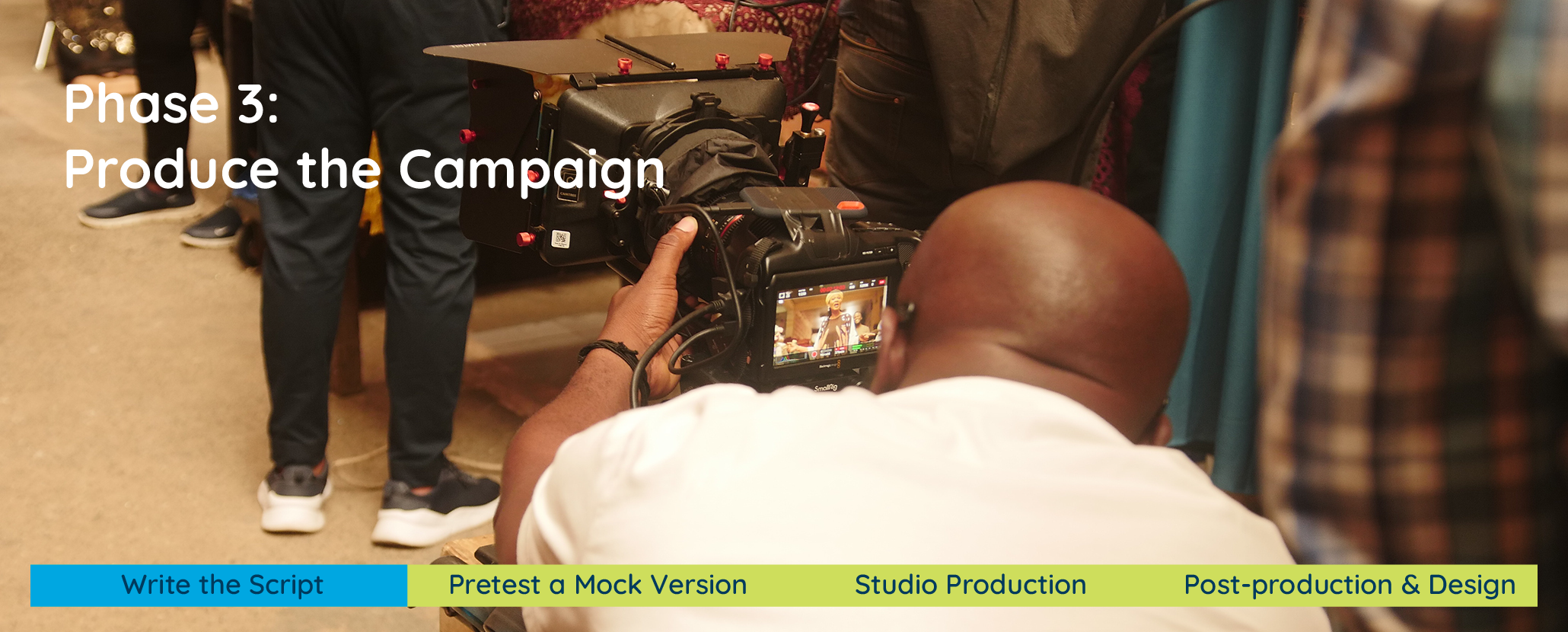Write the Script

Les Production phase includes developing scripts, working with a studio for production and post-production, pretesting, and sound design, as well as several approvals along the way. This phase is when the creative concept turns into the campaign!
Write the Script
How do we write the story for our creative concept?
By the end of this step, you will have approved scripts for your SBC mass media campaign.
How to conduct this step and achieve its main objectives:
Developing the Scripts
Script writing is a creative skill that may not exist in-house. It is important to have script writers who participate throughout the creative process so that they are fully informed when it is time to start writing. Alternatively, if you have been working with a creative agency, they should be prepared to use the final creative concept to develop and submit draft scripts for your consideration.
*Pay close attention to the length of your scripts! For a 60-second spot, you should aim for about 200 words (not including unrelated but necessary content such as attributions to government, donors, or the program). If you try to make cuts in the studio, you may struggle to retain plot points and SBC objectives. It is far easier to limit the words while writing the script than in the editing room.
Alternatively, if you have selected an unscripted, testimonial format, consider what questions you need to ask your speakers to elicit the most interesting and impactful responses. Also consider what type of speakers would be the most engaging for your intended audience.
Templates and Tips for Scripts
Suggested time:
1 week
Participants:
Core design team; script writers
Tool and Examples: Templates and Tips for Scripts
Different formats (e.g., radio, TV) have different standard templates based on how they are used by studios and actors. The Tools and Examples folder contains a basic template for radio and TV scripts, although your script writers may have their own preferred format. Also, for the sake of comparison, the folder includes some first draft script examples and the final script. You will notice considerable differences from the first draft to the final script.
A good approach is to have several writers working independently on their own version of the scripts. After the scripts are submitted, you and the design team can select the best version, tweaking and borrowing from other versions as appropriate. All scripts should follow the outline in the Final Creative Concept Tool so that they are interchangeable, with some adjustment for style.
Effort required:

Get the Scripts Approved
The final script (including any translations) should be shared with a larger group of stakeholders for approval, especially anyone who may require messaging or word choice changes. Avoid having to return to the studio because an important stakeholder was not consulted. Taking extra time to obtain necessary approvals will save time, money, and frustration.
